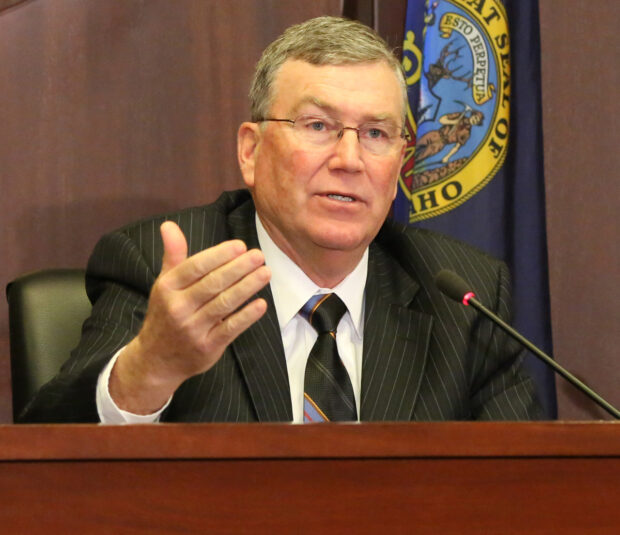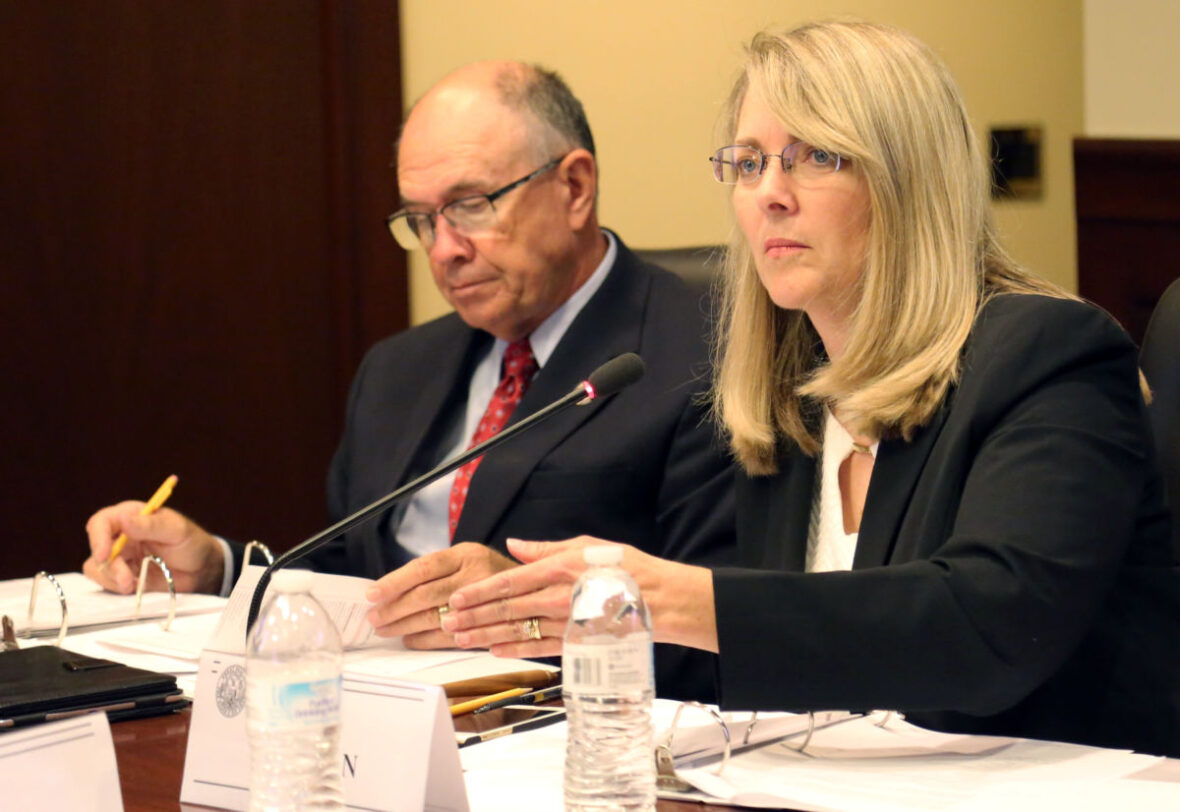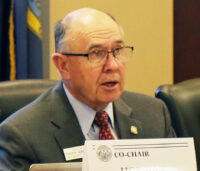After nearly three years of work, the public school funding formula interim committee wrapped up its assignment Monday and formally recommended the Legislature re-write Idaho’s school funding formula.
While the committee has met for the final time, hard work remains. It’s now up to the 2019 Legislature to decide how Idaho will pay for schools, and whether and how to update the formula that disperses about $1.8 billion in general fund spending to school districts and charters this year.
Before adjourning Monday, the funding formula committee took two important steps:

It accepted the fourth draft of a potential new school funding formula model from the Education Commission of the States and agreed to recommend that draft “positively” to the Legislature.
The lawmaker pushing for a new model was House Speaker Scott Bedke, R-Oakley — sending a clear message that the rewrite is a 2019 legislative priority from the highest-ranking member of the House.
What would change?
The main difference between Idaho’s existing funding formula and the new proposal is how schools would be funded. The current model sends money to schools based on a complicated attendance-based formula built around support units, a measurement that is similar to a classroom. The new proposal would send money to districts based on student enrollment, with additional funding “weights” applied based on the type of students served and the size of the school.
“What we have here is a very powerful tool,” Bedke said. “Anyone who has been engaged here can see how adaptive this is. it has enough dials available to the (education) committees to morph our policy over time to get into this brave new world by funding (our schools) by the student and not by the support unit.”
Rep. Wendy Horman, R-Idaho Falls, said the change is important because it simplifies funding and adds transparency to the process. The proposed new formula would be based around a per-pupil funding amount, now proposed at $4,287. If lawmakers sign the change into law, Horman said local school officials would be better able to plan and understand funding. All they would have to do is plug in their student enrollment, multiply that by $4,287 and factor in demographics, such as the number of at-risk students or the size of a school.
The money that would go out to districts under the new formula would also be discretionary, meaning school leaders could prioritize more money based on local needs, as opposed to adhering to rigid state funding line items or earmarks.

“We are recognizing your students are individuals and we are going to start funding them as individuals according to the needs they have and the learning environment that is best for them,” Horman said.
Consultants and the interim committee made three important changes before releasing the new draft accepted Monday.
- They increased the minimum weight for special education students up from 40 percent to 65 percent.
- They changed the funding weight for secondary schools with enrollments below 100 students to pay those schools as if 100 students were enrolled.
- They changed the wealth adjustment for districts to be based on the taxable property wealth, per student.
Winners and losers
Changes in the new draft helped reduce the number of districts that would stand to lose money under the switch, which is one of several sticking points for skeptics and opponents. Under the latest model, 36 districts or charters would expect to see a decrease in funding, while the remaining districts would receive stable or increased funding.
According to funding comparison calculations under the latest draft, districts that would expect to see less funding include:
- Orofino, a decrease of $1.2 million, or 13.4 percent.
- Fremont County, a decrease of nearly $1.2 million, or 9 percent.
- Bliss, a decrease of $95,036, or 5.8 percent.
- Nez Perce, a decrease of $104,800, or 5.9 percent.
Districts that would expect to see funding increases include:
- Jefferson County, an increase of $3.1 million, or 10 percent.
- Jerome, an increase of $2.2 million, or 10 percent.
- West Ada, an increase of $9.4 million, or 4.4 percent.
- Pocatello, an increase of $4.8 million, or 7.3 percent.
“One thing we’re trying to do is reduce the number of losers the original draft of the formula provided,” said Sen. Chuck Winder, R-Boise. “That obviously takes money.”

Throughout the process, Winder and Horman have stressed that they will hold districts “harmless” during the initial transition to a new formula. Under their definition of hold harmless, that means districts and charters would not receive less money under the new formula than they did this year, for a period of three years. After that, the formula would kick in fully and protection would fall away.
On Monday, ECS consultants estimated it would cost the state an additional $6.5 million to hold districts harmless during the first year of the transition. However, ECS does not have access to current 2018-19 school enrollment data, and likely won’t until next month. Plus, ECS consultant Michael Griffith expressed concern over the validity of state data on at-risk students. In the absence of reliable data, Griffith built the calculations around estimates. If his estimates are off significantly, funding estimates could also be off significantly because the number of at-risk students would drive funding under the new model.
Griffith suggested that the at-risk numbers reported today are inaccurate in many districts. The numbers do not drive funding, and as a result, school officials don’t take them seriously.
“Once they start driving funding, they will be taken much more seriously,” Griffith predicted.
What happens next?
The school funding formula committee does not have the power to adopt the change, only to recommend the change to the Legislature. That means the funding debate will pick up again in January in the House and Senate Education committees.
A subcommittee is already at work drafting a bill to enact the change. That bill would need sponsors and champions to steer it though the education committees and win passage on the floor of the House and Senate. In addition to passing at least one massive funding formula bill, the change would also mandate changes to dozens of other sections of Idaho law. Horman estimated that 55 other laws would need to be amended — basically any other state law that mentions “support units,” “average daily attendance,” “divisors” or similar terms rooted in the current formula.
Lawmakers expect the proposal to be one of the biggest issues of the session, in part because the formula drives the state’s largest expense each year — school funding.
“The education committees are going to be paramount to its passage,” Senate Education Committee Chairman Dean Mortimer, R-Idaho Falls, said. “My guess is this is going to be, if not a whole session, at least half a session of work for the germane committees.”
Test drive the new formula yourself
An interactive spreadsheet that includes the calculations for a new funding formula is available to download from the Legislature’s website. Click on the Nov. 21 draft model to use the formula the committee accepted and recommended Monday.
